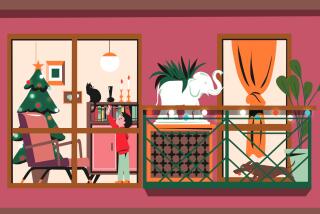Before you throw anything away, keep in mind that today’s junk may well end up as tomorrow’s treasures.
You’re cleaning house for the new year, right? Be careful what you throw away.
Now is not the time to toss all your ‘90s treasures. You know those Beanie Babies? And that expensive dress you had to have but hardly ever wore?
And what about your magazines--Martha Stewart Living, the New Yorker, Newsweek? You don’t want to be caught at a cocktail party in 30 years saying, “Oh, yes, I had a (fill in the blank), but I threw it away long ago. Who knew?”
Who would have thought that a Superman candy ring from 1940 would be worth $20,000 today or that a ponytail brunet Barbie made in 1959 and still in the box would be going for almost $10,000?
Even Harry Rinker, author of “Price Guide to Flea Market Treasures” (Krause Publications, 1997), is just guessing when he spends $250 on any object he thinks might be a collectible in the future.
This year, Rinker is betting on TV remote controls, advertising mouse pads and cell phones. Don’t keep Nintendo, he advises. It doesn’t display well. Or computers.
“There’s no design styling to them,” he says. Or any product that is marketed as a collectible when new, including millennium objects.
The antiques and collectibles market changed markedly in the ‘90s. In the past, an object had to be 100 years old to be deemed antique. Now an Eames chair from the 1940s or a Bauhaus table from the 1920s is considered antique and sells for tens of thousands of dollars.
What makes something a collectible always has been a point of argument, but in this decade, the definition became even more controversial as so-called collectors anointed Beanie Babies and Pokemon gold cards as collectibles before they even popped off the assembly line.
“One of the things that happened in the ‘90s,” Rinker says, “is that the bulk of collectibles was not sold to collectors anymore but to people who were decorating with them.”
As the market grew, the definition of what makes a collectible expanded with it.
Rinker says he advises people to collect what they like, without regard for profit potential.
“I abide by Rinker’s 30-year rule,” he says. “The first 30 years of its life, anything’s value is speculative.”
His best advice? Crocheted toilet paper holders.
“If I had to save only one object from the 20th century, my selection would be a crocheted toilet paper holder,” he says. “Because I think almost everybody had one, and I think it says a lot about American taste.”


